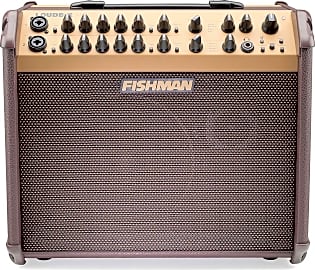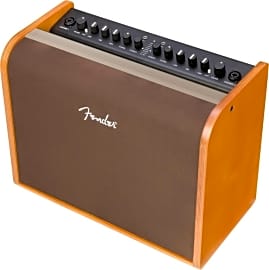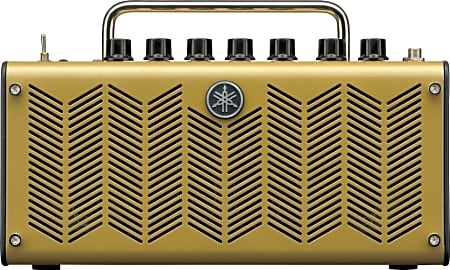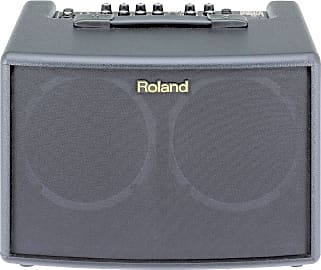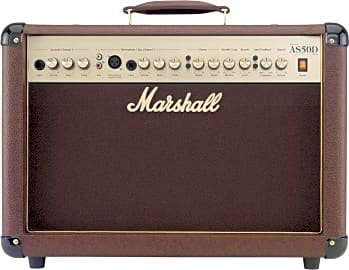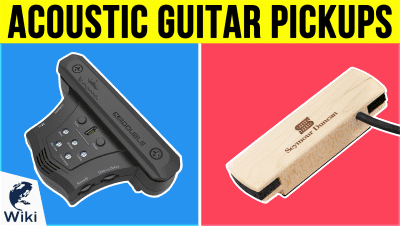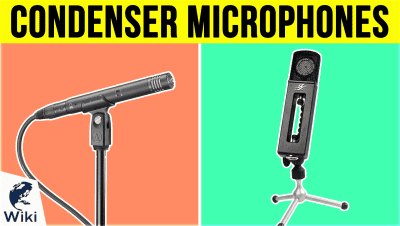The 10 Best Acoustic Guitar Amplifiers

This wiki has been updated 34 times since it was first published in October of 2016. Whether it's used as a standalone unit in smaller venues or as part of the backline at large concerts, an acoustic guitar amplifier is often an essential piece of equipment. We've included a variety of models suitable for a wide range of musicians — from studio session artists to subway buskers — and ranked them by their sound quality, equalization controls, portability, and power. When users buy our independently chosen editorial choices, we may earn commissions to help fund the Wiki.
Editor's Notes
December 15, 2020:
While older models such as the Marshall Soloist AS50D, Yamaha THR5A Mini, and Roland AC-60 are certainly more basic than a lot of their DSP-equipped, amp-modeling counterparts, they still hold their ground in a market where decades-old amplifiers are highly sought-after, and tried-and-tested workhorses are often reissued to satisfy this market interest. As such, these three models retain their place on our list in this latest update, despite their being a little "long in the tooth".
To span the age gap, we have included two relatively new releases in our ranking, namely the Orange Crush Acoustic 30 and the Blackstar Sonnet 60W. While the former brand is as globally recognized for their sound as they are their distinctive bright orange cabinets, this acoustic offering delivers typically warm tones and is backed by a rich heritage of British manufacturing quality. The latter, on the other hand, is a much newer brand (coincidentally also British) that was started by a bunch of ex-Marshall Amplifiers employees, who are making waves in the industry by producing excellent value, high-quality amps that include modern features such as Bluetooth audio playback, studio-quality digital reverb, and built-in high pass filters.
Finally, we upgraded the Ibanez T15II Troubadour II to the Ibanez T30II Troubadour II, as, while it retains many of the same features as its predecessor, we felt that it had a little more potential for real-world applications, being twice as powerful and featuring a DI output, making it better suited to live performance in larger venues, while achieving better clarity when playing unaccompanied, without a backline.
December 10, 2019:
A lot of acoustic performers are also singers, and most of the amps on this list appear to understand that, in that they offer separate channels for the amplification of vocals and guitar. Some guitarists will prefer, however, to use these channels in lieu of the pickups that might be installed on their acoustics (or in the event that their acoustics lack pickups altogether), plugging a nice condenser mic into the amp and playing their instrument just behind it. The Fishman Loudbox Artist Pro 600 is particularly adept at this, as it offers 24-volt phantom power to provide juice to microphones that need it to perform.
We put a pretty high value on portability here, as well, but without forgetting that premium speakers often weigh a lot more than cheap options thanks to their larger, more powerful magnets. Ultimately, this meant finding a balance between weight and sound quality, one that could be augmented by the inclusion of a gig bag that might make the amp easier to carry around, like the ones you'll see with the AER Compact 60/4 Twin Channel and the Roland AC-60.
In making room for new models like the Fishman mentioned above and the Boss Singer Pro 120, we said goodbye to the likes of the Peavey Ecoustic E110, which suffered some significant availability issues. The company has other offerings that are readily available in its price range, but that take very large steps backward in both power and EQ controls, eliminating the integrated graphic equalizer that made the E110 such a desirable model.
Special Honors
Mesa Boogie Rosette 300 As something of a departure for this high-end manufacturer of rock-oriented amplifiers, this dapper-looking unit deserves a mention. The brand has successfully transferred the much-lauded Mesa tone into this acoustic combo, that boasts an impressive array of features. These include three onboard reverbs, a high pass filter, a four-band EQ, and with 300 watts of output, you won't have any problem competing with a drum kit, which is always a bonus. mesaboogie.com
Why You Need A High-Quality Acoustic Guitar Amplifier
The sound projecting from the hole is very bass-heavy, so placing a mic a that point alone will often sacrifice the high end tones.
For the most part, an acoustic guitar can amplify itself. Its large, cavernous body and expressive sound hole usually produce just the right amount of volume to accompany the human voice. A lot of open mic nights at small coffee shops don’t even bother to employ a microphone to amplify the singer’s voice, knowing that his or her natural projection will combine with that of any given acoustic to more or less fill the space. Also, giving any additional amplification to artists at an open mic even might just drive away peace-seeking customers.
If you do play at an event that requires additional amplification, and you don’t have an amp of your own, one of three things will happen, depending largely on the acoustic guitar itself. None of these is ideal. If the axe has no pickup of any kind, then there’s nothing that the sound person can do to amplify your playing other than to mic the instrument.
This process often places two microphones in front of the guitar, one near the sound hole and one at about the mid-way point of the neck. The sound projecting from the hole is very bass-heavy, so placing a mic a that point alone will often sacrifice the high end tones. A microphone somewhere up the neck will pick these up and round out the sound. However many microphones you end up using, this configuration severely limits the amount you can move on stage.
If the guitar does have some kind of pickup, then you can run it through the PA system at the venue. The big problems there are that you’re going to end up playing through a different PA at every venue, and you’ll have very little control over the balance between your guitar and your vocals, or over the sound of the guitar itself.
In a third scenario, an overly ambitious sound engineer will combine the two methods, plugging your guitar into the PA system and elaborately placing microphones around it. This will give you the best, most reliable sound profile, but it still suffers from all of the issues laid out above.
An acoustic amp, on the other hand, will give you complete physical freedom (especially with an investment in a high-quality wireless system), as well as complete control over your sound. If something isn’t quite right with the tone, you can make EQ and volume adjustments — as well as effects adjustments with some models — in the middle of a song.
How To Find Your Perfect Acoustic Guitar Amp
An acoustic guitar calls for a certain kind of amplifier. The tone you’re looking for is clean and deep. As such, an amplifier that might be great for an electric guitar could totally destroy the sound of a good acoustic. Imagine putting your Martin through a Vox AC-30 tube combo. At first, that amplifier’s natural warmth might be pleasing to the ear, but as those tubes heated up and lent more and more natural distortion to the sound, your acoustic would sound like a strange electrified wooden monster. That might be just the thing for some genres, but the vast majority of acoustic players need a clean tone that will stay that way.
Imagine putting your Martin through a Vox AC-30 tube combo.
The odds are that you play an acoustic with steel strings, so we’re going to focus on how different amp features can improve the sound of such an instrument. Fortunately for nylon players, all of these traits still apply, but you’re liable to use them a little less expressively, as your guitars’ pickups are either tiny, built-in microphones or transducers, which will benefit from a flatter amp setting.
A lot of acoustic guitar amps provide you with some form of EQ. Often, this is a three-band EQ allowing you to control bass, mid, and high frequency expressions. Less expensive options might offer less control over tone, and if your guitar has an EQ system built into it, these may suffice. Most players would appreciate the additional control, however.
To that end, look for even more tonal controls like extended EQs, as well as brightness or presence knobs, which can add a lot of clarity to an underperforming pickup. Cheap acoustic pickups can sound rather muddy, but you can breathe new life into that signal with the right amp.
As far as wattage goes, that has a lot to do with your current career status and with your ambitions as an artist. If you’re happy to play small coffee shops on the weekends, a little amp with enough juice to complement a vocal mic should be plenty. Some options even have XLR inputs so you can split your amp between guitar and vocals. If you harbor ambitions of larger venues and crowds, it’d be wise to invest in a higher wattage now, as you can always turn down in smaller settings. Keep in mind that you don’t need to create a wall of sound for any instrument, least of all an acoustic guitar. Any venue that needs that much juice will be equipped to mic your amplifier.
Other Ways To Refine Your Sound
Once you’ve decided on a great acoustic amplifier, you’ll want to look into additional ways that you can define your personal sound. This is the kind of attention to detail that will set you apart from the legions of other performers vying for attention from a beleaguered record industry.
We mentioned above that a lackluster pickup can cause a lot of damage to your sound.
We mentioned above that a lackluster pickup can cause a lot of damage to your sound. If your guitar came with a pickup built in, it might be worth investigating the prospect of an upgrade. You can also add components like internal microphones or transducers to alter your tone.
A good pedal board should become your best friend, as well. These are no longer only the providence of experimental musicians, as a slew of effects pedals have come along over the past few decades that add subtle, specific features to your tone. Invest in high-quality pedals that can control reverb and delay, as well as a good multi-band EQ.


